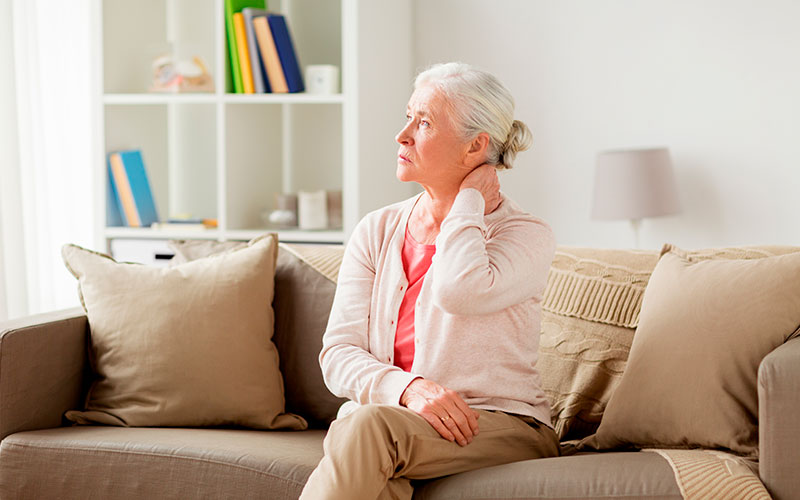Spinal Stenosis
Spinal stenosis one or more of the foramina (bony openings) in the spine narrows, which reduces the available space for nerves. This results in compression of spinal nerves or the spinal cord over time, causing tingling, numbness, pain, and weakness.

What are the types of spinal stenosis?
There are two types of spinal stenosis:
- Foraminal stenosis (lateral stenosis), where a spinal nerve becomes compressed or inflamed.
- Central canal stenosis, where the spinal cord becomes compressed or inflamed.
What causes spinal stenosis?
There are a number of causes that contribute to spinal stenosis, including:
- Osteoarthritis of the spine, breakdown of the cartilage covering the facet joints results in the bones of the joint rubbing against each other, which can cause bone spurs. This leads to inflammation and contributes to the narrowing of the foramina.
- Ligament thickening, if ligaments in the spinal canal thicken and turn into bony tissue, this can affect the spinal cord and spinal nerves. Some ligaments can also buckle as a result of progressive spinal degeneration.
- Degenerative disc disease, discs lose fluid and begin to flatten, which results in a narrowing of the intervertebral foramina, or a disc bulge that can push into the spinal canal. Degenerating discs also put pressure on close by facet joints, accelerating their degeneration.
What are the symptoms?
Common symptoms and signs that may indicate spinal stenosis include:
- Localized pain in the lower back or neck
- Aching or shooting pain that radiates outward from the spine into the arms or legs
- Tingling, numbness or weakness as a result of spinal nerve root compression
- Loss of bladder or bowel control
- Loss of feeling in the legs and feet
In general, the symptoms of spinal stenosis develop slowly over time and can either be intermittent or ongoing. In some cases, symptoms can be triggered by activities such as walking or cycling or even standing. It is also possible to only experience neurological deficits (numbers, tingling, and weakness), without any pain.
When should you see a doctor?
If you experience any of the symptoms above, then you should make an appointment with a spinal specialist who will be able to accurately diagnose your condition and offer a comprehensive treatment and pain management plan.
Your doctor will take a full patient history and conduct a physical examination, observing and palpating the spine. They will check your spine’s range of motion, leg and arm strength, reflexes, and sensation. They may also request medical imaging, including x-rays, an MRI, or a CT scan to get confirmation for a spinal stenosis diagnosis.
Spinal stenosis is most often seen in patients over the age of 50 and tends to worsen over time, although the rate of progression, as well as the symptoms, varies from person to person. In many cases, the condition can be managed with medication, rest, and physical therapy, but if symptoms continue to worsen despite non-surgical intervention, surgery may be necessary.
Get Assistance from the Spinal Specialists
If you are concerned that you might have spinal stenosis, make an appointment with a doctor who has specific experience in treating back conditions. The team at Northwest Surgical Specialists are available to diagnose and treat your condition to effectively relieve pain and help restore your quality of life.